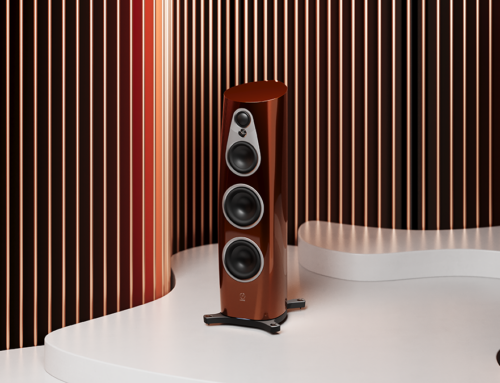Xi’s team has vast experience in an extensive range of sectors, measuring, diagnosing, and solving our clients’ noise and vibration concerns. Xi provides a complete solution, going further than just providing results. We quantify and explain noise and vibration, and then suggest and design mitigation solutions.
When combining vibration and noise measurements with detailed acoustic computer simulations the process that Xi has developed for improving noise and vibration is applicable across all sectors. Be that industrial, transportation, commercial goods or anything which makes a noise.
Noise emanates from a vibrating source. Sometimes the noise will become airborne directly from the source, though very often, the vibration will interact with surrounding connected structures, amplifying the noise through the resonance of large surfaces.
Many noise standards and assessments rely upon the overall volume. Typically reported as Sound Pressure Level in decibels (dB). However, volume is only a small part of what makes a noise. Subtleties in beats, phase and frequency also impact the noise. Understanding these characteristics in noise can help to pinpoint the source and help drive effective mitigation which directly targets the source.
Example process
The typical process will combine acoustic measurement, vibration measurement, and computer modelling. Although taken individually each process can provide significant information on the characteristics of the noise. In the case study below, we look at the noise and vibration from the drivetrain of a wind turbine which was failing noise assessments due to the overall volume.
Acoustic Measurement
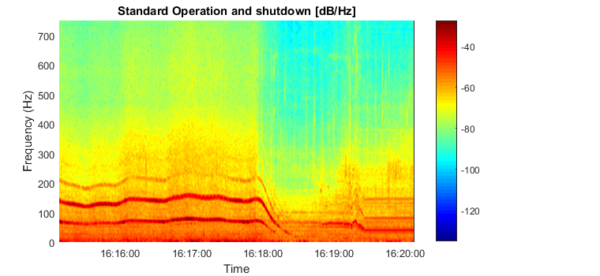
Vibration Measurement
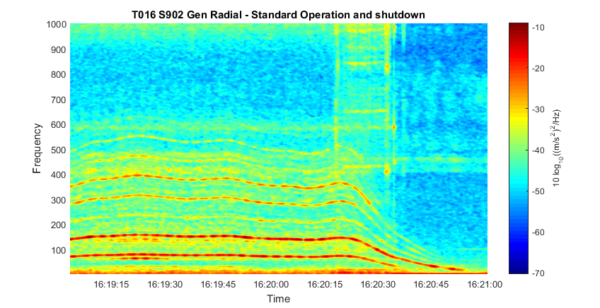
Vibration analysis of the same period shows other frequencies which are present but do not appear or contribute to the noise which is heard. Also, details such as the pulsing beat can be observed.
The acoustic analysis shows that the overall noise level is being driven by tonality. Frequency analysis of the tones was then able to link the source of the tones to components within the drive train. Vibration analysis here, adds detail to understanding. Vibration measured at different parts of the structure shows how the vibration is transmitted through the turbine chassis and panels and helps to identify amplifying “sounding boards” such as the nacelle’s fibreglass walls.
Modelling & simulation
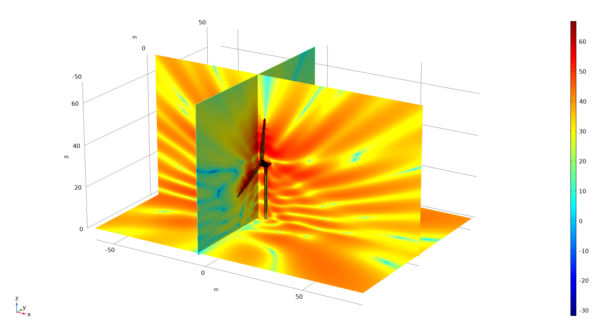
Simulation of the system can also add significant value in understanding, diagnosing and designing mitigation. Models can assist in the visualisation of the problem such that the mechanism of noise production can be fully understood, and also allows mitigation concepts to be virtually tested and validated before physical installation and testing. In the model image below the behaviour of the turbine at one of the specific tonal frequencies is observed. Here it can be seen the blades produce a constant level and the tower has “hot spots” of amplification. Helping inform where mitigation could be targeted. Models also allow components to be “turned off” allowing a more detailed assessment of their contributions to the behaviour of the machine. In the case of a wind turbine, are the blades, tower, or nacelle the biggest contributor? A model makes this difficult question easy to answer.
Making the noise go away!
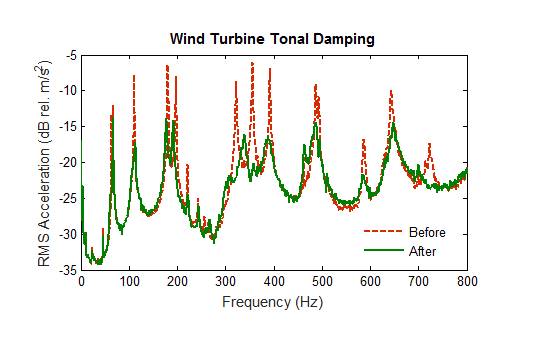
Noise and vibration will always be present in any system. The key is knowing the most effective places and ways to remove and reduce the biggest contributors to the overall noise. All these steps, acoustic analysis, vibration monitoring and computer modelling, provide valuable insight into the character of the noise, what is causing the noise and what can be down to reduce and improve the quality of the noise. In the case of the wind turbine, Xi was able to use the results of the analysis to propose a range of targeted mitigation options which were tested in a virtual environment, proving qualification as to their effectiveness and allowing a full cost-benefit analysis to be undertaken to choose the most effective solution both in terms of acoustic performance and in terms of economic value. In this example specialist tonal damping to key contributing components of the structure was applied, significantly reducing the audio amplitude of tones and therefore reducing the overall sound power level and volume.


